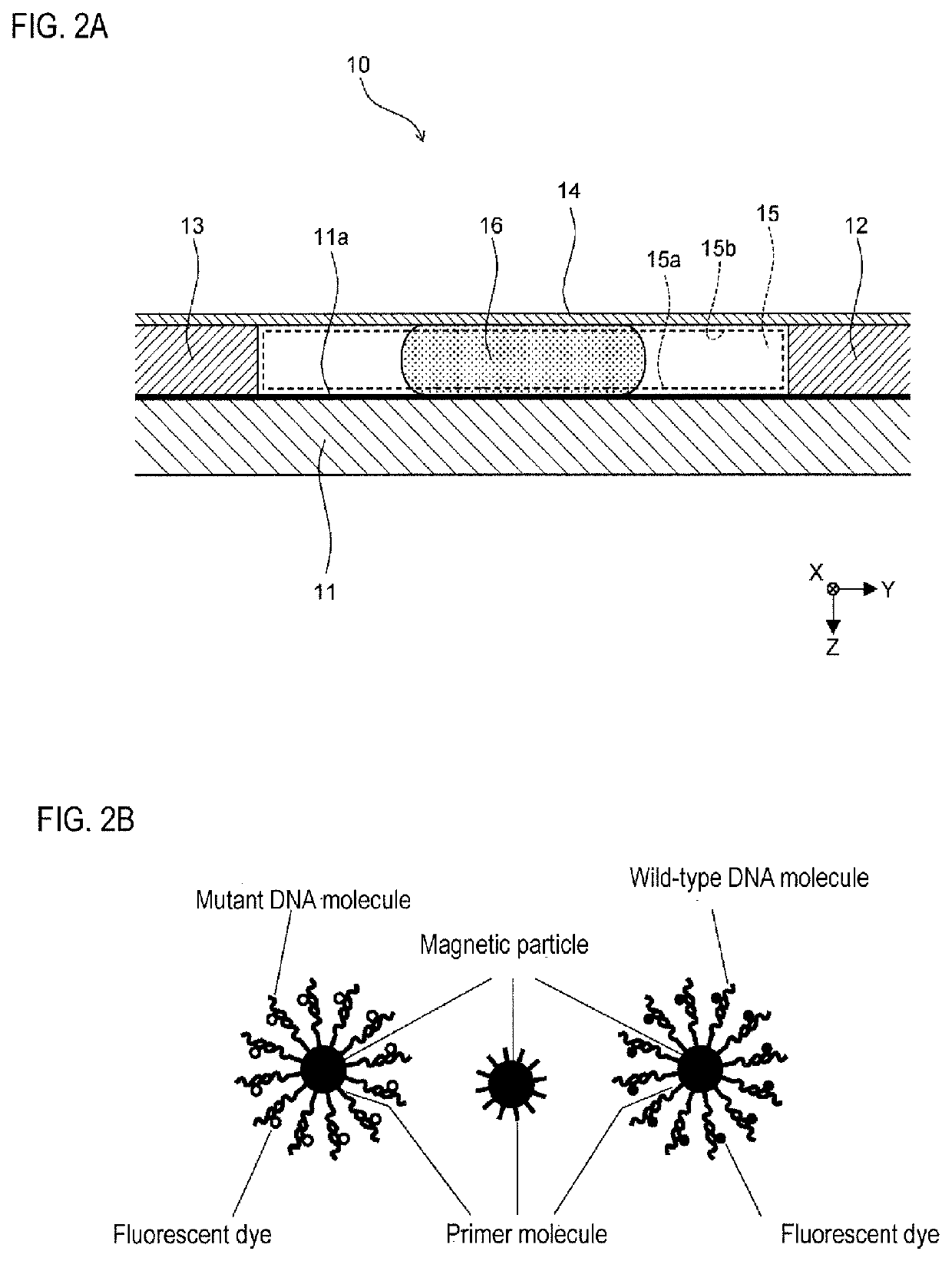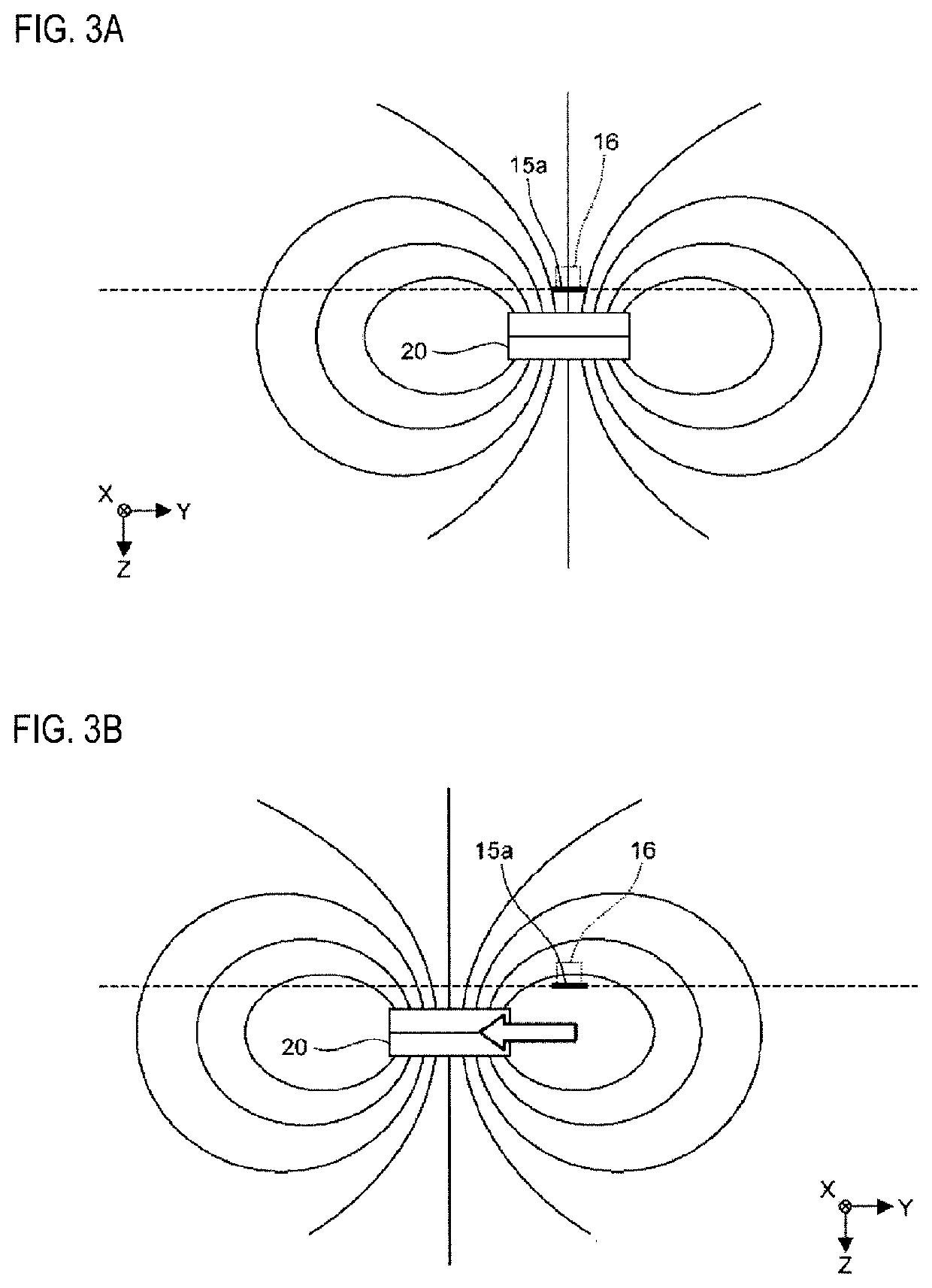Detection method and detection device
a detection method and detection device technology, applied in magnetic separation, instruments, organic chemistry, etc., can solve the problem of difficult to detect the detection target substance with substantial precision, and achieve the effect of accurate detection and fixed fixation
- Summary
- Abstract
- Description
- Claims
- Application Information
AI Technical Summary
Benefits of technology
Problems solved by technology
Method used
Image
Examples
first embodiment
[0058]The first embodiment is a detection method to detect a detection target substance bound to magnetic particles, and the invention is applied to a method to detect target DNA bound to magnetic particles. The first embodiment is a method related to the detection process. When the process performed prior to the detection process is referred to as a “pre-process”, the target DNA molecules are detected from the liquid suspension manufactured in the pre-process.
[0059]As shown in FIG. 1, the detection method to detect a detection target substance includes a supplying step, first application step, second application step, application termination step, and detection step. A container 10 shown in FIG. 2 (a) is prepared prior to performing these steps.
[0060]As shown in FIG. 2A, the container 10 is provided with a slide member 11, spacers 12 and 13, and cover 14. In FIG. 2A, the XYZ axes are mutually perpendicular, the XY axes represent the horizontal plane, and the Z-axis positive directi...
second embodiment
[0100]In the first embodiment the magnetic particles are in a monolayered state on the bottom part 15a, in mutual chain-like contact. In this case, if the magnetic particles with the bound target DNA molecules are a low percentage of all magnetic particles, the contact of like magnetic particles with bound target DNA molecules may be rare within the chain of magnetic particles. Accordingly, the target DNA molecules bound to the magnetic particles can be accurately detected. However, when there is a high percentage of magnetic particles with bound target DNA molecules, the is readily contact among those magnetic particles with bound target DNA molecules. In this case, it is necessary that as far as possible like magnetic particles are not in contact on the bottom part 15a.
[0101]In the second embodiment, contact among like magnetic particles is inhibited by dispersing the magnetic particles on the bottom part 15a by terminating the application of the magnetic field relative to the ma...
third embodiment
[0137]In the first and second embodiments magnetic particles are linked substantially perpendicularly relative to the bottom part 15a, and thereafter the magnetic particle chain is inclined relative to the bottom part 15a. In the third embodiment, magnetic particles are monolayered on the bottom part 15a and are not linked perpendicularly relative to the bottom part 15a.
[0138]As shown in FIG. 18, the detection method of the third embodiment includes a supplying step, magnetic field application step, application termination step, standby step, and detection step. The container 10 shown in FIG. 2A also is prepared prior to performing these steps in the third embodiment. The supplying step of step S31, the standby step of step S34, and the detection step of step S35 are identical to the steps of the second embodiment and their description is omitted.
[0139]The magnetic field application step of step S32 is a processing step that applies a magnetic field on the liquid suspension 16, and...
PUM
| Property | Measurement | Unit |
|---|---|---|
| angle | aaaaa | aaaaa |
| magnetic field | aaaaa | aaaaa |
| transparent | aaaaa | aaaaa |
Abstract
Description
Claims
Application Information
 Login to View More
Login to View More - R&D
- Intellectual Property
- Life Sciences
- Materials
- Tech Scout
- Unparalleled Data Quality
- Higher Quality Content
- 60% Fewer Hallucinations
Browse by: Latest US Patents, China's latest patents, Technical Efficacy Thesaurus, Application Domain, Technology Topic, Popular Technical Reports.
© 2025 PatSnap. All rights reserved.Legal|Privacy policy|Modern Slavery Act Transparency Statement|Sitemap|About US| Contact US: help@patsnap.com



